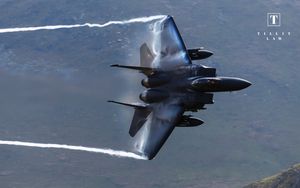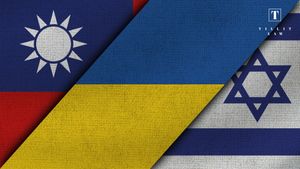The government may use the sole-source authority in Federal Acquisition Regulation (FAR) § 6.302-1 when there is a reasonable basis to conclude that its minimum needs can only be satisfied by one responsible source. In this regard, a procuring agency has the discretion to determine its needs and the best method to accommodate them, especially in procurements involving matters of national defense or human safety. Protesters disagreement with the government’s judgment concerning its needs, without more, is insufficient to prove that the government’s judgment is unreasonable. However, even in such procurements, potential alternative sources must be afforded a meaningful opportunity to demonstrate their ability to meet the agency’s needs. When prospective sources are excluded from competition in favor of a sole-source award without the chance to demonstrate their ability to meet the requirement, they are entitled to file a bid protest provided they qualify as an interested party. To qualify as an interested party to file a Government Accountability Office (GAO) protest, the protester must be eligible for the award based on the current record. A protester is not considered an interested party if it is not eligible to receive a contract award even if its protest is to be sustained.
In B-423321; B-423321.2, a decision issued on May 6, 2025, the GAO dismissed a bid protest challenging a sole-source award involving matters of human safety because the protester did not qualify as an interested party based on a review of the current record. The underlying request for proposals was issued by the United States Forest Service (USFS) for the acquisition of an aerial long-term fire retardant (LTFR) called Qela for testing, along with ancillary support services. As background, the USFS only purchases qualified aerial LTFR products to combat wildfire spread. For qualification, a manufacturer must submit its LTFR product for a laboratory evaluation. The required laboratory assessments consist of multiple tests, including a uniform corrosion test. Following the laboratory evaluation, the product must be deemed either fully or conditionally qualified for the USFS to purchase the aerial LTFR product. Finally, if the product is determined to be conditionally qualified, an additional operational field evaluation (OFE) is required, which utilizes at least 200,000 gallons of the LTFR product. Once a successful OFE is conducted, the product is deemed fully qualified and is added to the USFS Qualified Products List (QPL).
In 2022, the awardee’s subsidiary company obtained full qualification for two LTFR products, but one of the products caused significant corrosion on government aircraft. As a result, the USFS removed both products from the QPL. In 2024, the awardee sought to qualify another LTFR product named Qela. Upon reviewing the results of Qela’s laboratory evaluation, the agency determined that the product was “conditionally qualified,” but would require an OFE to ensure it did not accelerate corrosion of government aircraft. Subsequently, in December 2024, Qela was added to the USFS QPL as a conditionally qualified LTFR product. Significantly, in obtaining conditional qualification, Qela also passed galvanic corrosion testing, which was an additional testing requirement recently adopted by the USFS as a precondition to OFE eligibility.
On January 29, 2025, the USFS issued a notice of intent to award a sole-source requirements contract for Qela, along with ancillary services to the awardee under FAR 6.302-1. The notice provided that any interested companies with LTFR products could submit a capabilities statement, proposal, or quotation within 15 days. In the sole-source justification document, the USFS provided that the awardee was the only supplier that had completed the predecessor steps in the QPL process to become conditionally qualified and eligible for an OFE. The justification document also stated that the USFS would order 900,000 gallons of Qela for an estimated $13 million, including 200,000 gallons for regular testing and 700,000 gallons for additional testing to ensure that the product could be mixed with other LTFR products without accelerating the corrosion of government aircraft.
Meanwhile, after the awardee’s LTFR products were removed from the QPL in 2022, the protester had become the sole supplier of LTFR products and ancillary services to the USFS. Accordingly, the protester maintained that its contract provided it with the exclusive right to provide LTFR products to the USFS, except that the agency could purchase 200,000 gallons of a conditionally qualified LTFR product for field testing purposes. In November 2024, one of the protester’s additional LTFR products also became conditionally qualified. Notably, however, the protester’s conditionally qualified LTFR product did not complete the new galvanic corrosion testing requirement. Following the USFS decision to award the sole-source contract for 900,000 gallons of Qela, the protester filed a protest with the GAO. In its protest, the protester argued that the USFS decision to procure 700,000 gallons for additional testing, along with ancillary services, was unreasonable. The protester also argued that the USFS unreasonably failed to consider its alternate conditionally qualified LTFR product for OFE. The protester maintained that it was an interested party because its alternate LTFR product was ready for OFE based on its conditionally qualified status.
In response to the protester’s allegations, the USFS took the position that the protester was not the manufacturer of Qela, and the agency needed to test Qela to determine whether it could be afforded the fully qualified status. Furthermore, the agency maintained that the protester was not an interested party because, although the protester’s alternate product was deemed conditionally qualified, it had not yet completed the galvanic corrosion testing requirement. While the protester’s primary and alternate products were actively undergoing galvanic corrosion testing, the testing would not be completed before May 2025. The USFS provided that adopting galvanic testing consistent with the testing lab’s recommendation was necessary to maintain a fair and consistent approach to all products being tested for eligibility consideration. Additionally, the galvanic corrosion test would help screen products that would otherwise meet the current corrosion test criteria for obtaining conditional qualification status. Since the protester’s alternate LTFR product had not met this additional requirement, the agency asserted that the protester was not an interested party due to its failure to have a competitor product ready for OFE.
Upon reviewing the record, which included additional information requested from the agency, the GAO determined that the protester was not an interested party. The GAO pointed to the pending galvanic corrosion testing of the protester’s LTFR products in reaching its conclusion that the protester was not currently positioned to compete for an award. The decision noted that the determination of whether the protester’s products were ready for OFE was a discretionary matter reserved for the agency’s sound judgment. In exercising this judgment, the USFS had determined that the protester’s alternate product had to undergo the galvanic corrosion test before it could be approved for an OFE. The protester was reminded that the determination of whether a party is interested is based on the current record, which showed that the protester’s alternate product had not yet satisfied the new galvanic corrosion testing requirement. The GAO explained that the USFS was not required to forgo meeting its current need involving a matter of public safety solely based on the possibility that the protester’s product may be able to compete against the awardee’s product at some point in the future. Therefore, the protest was dismissed because the protester was found not currently capable of competing for a contract to have an LTFR product tested.
The sole-source exception to full and open competition authorizes procuring agencies to make a sole-source award if they reasonably determine that there is only one source capable of meeting their needs. The scope of the agency’s needs and how to best fulfill them are generally matters that are squarely within the procuring agency’s discretion, especially when the needs involve a matter of national defense or human safety. Therefore, mere disagreement with the agency on these matters, without more, is insufficient to demonstrate that the agency’s judgment is unreasonable. Furthermore, to qualify as an interested party to challenge such sole-source awards, the protester must be eligible for the award based on the current record before the GAO. In the protest described here, the protester’s alternative LTFR product was deemed not ready for an OFE at the time of the GAO’s review of the record due to not having completed the new galvanic corrosion testing. Therefore, the GAO dismissed the protest because the protester lacked standing as an interested party. Ultimately, however, contractors should be aware that even in procurements involving matters of national defense or human safety, procuring agencies must still provide any alternative sources a meaningful opportunity to demonstrate their ability to fulfill the agency’s needs.
This Bid Protest Insight is provided as a general summary of the applicable law in the practice area and does not constitute legal advice. Contractors wishing to learn more are encouraged to consult the TILLIT LAW PLLC Client Portal or Contact Us to determine how the law would apply in a specific situation.





